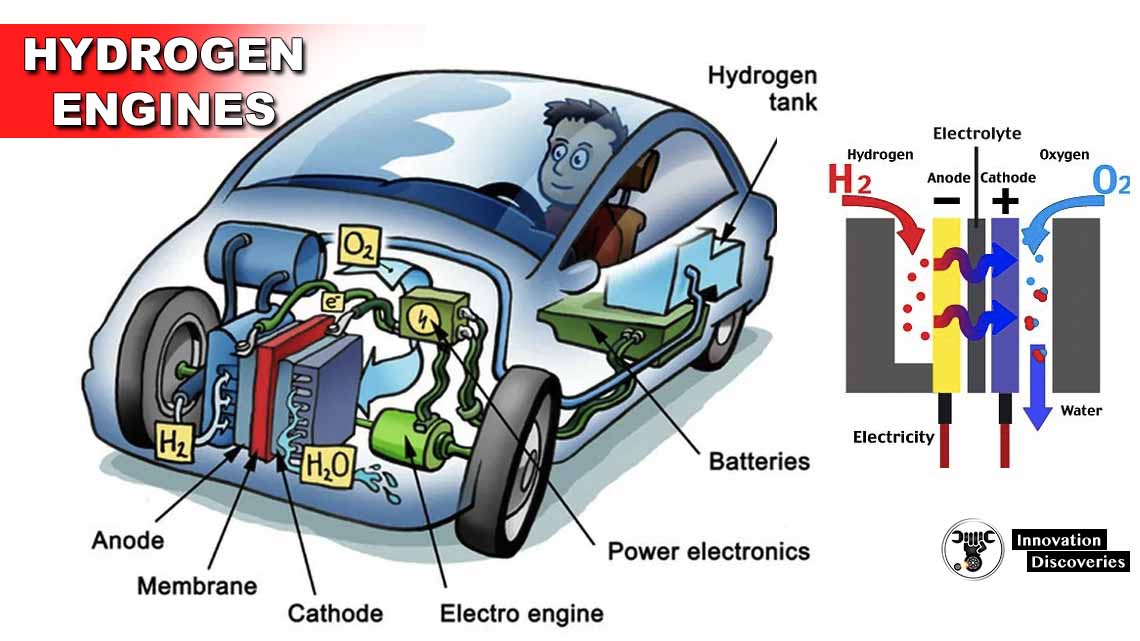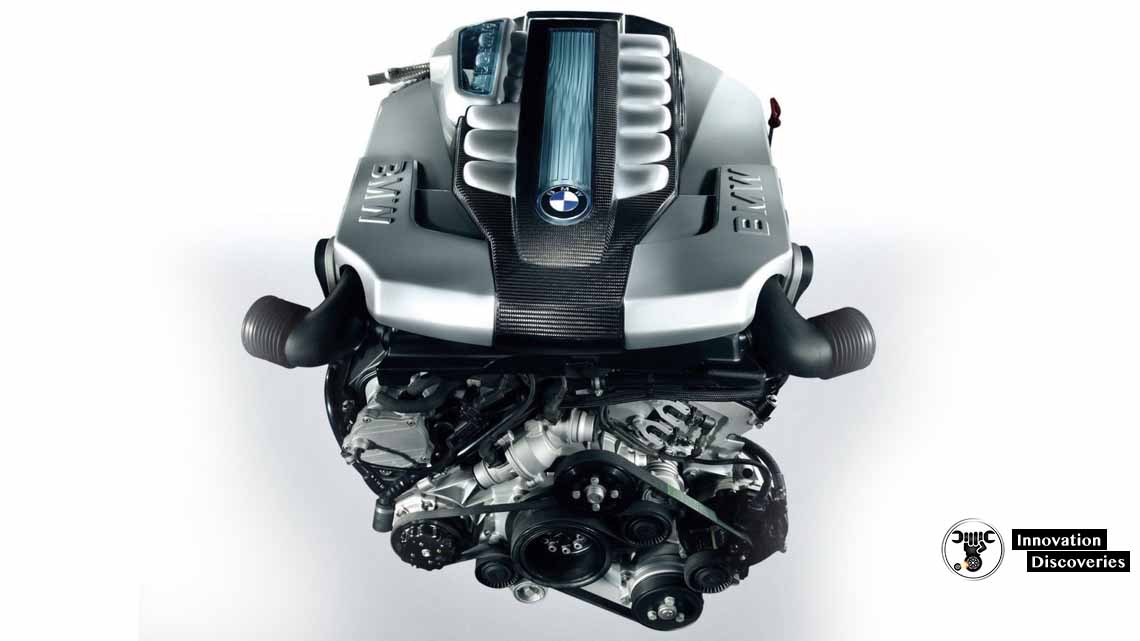
Hydrogen engines represent a promising technology in the quest for cleaner and more sustainable transportation. As the world seeks alternatives to fossil fuels, hydrogen emerges as a viable and eco-friendly option.
This article delves into the intricacies of how hydrogen engines function, exploring their mechanisms, advantages, and challenges.
1. Introduction to Hydrogen Engines
Hydrogen engines are propulsion systems that use hydrogen as a fuel. There are primarily two types of hydrogen engines:
- Internal Combustion Engines (ICEs): These engines burn hydrogen in a manner similar to traditional gasoline engines.
- Hydrogen Fuel Cells: These systems convert hydrogen into electricity through an electrochemical process, which then powers an electric motor.
2. Hydrogen Internal Combustion Engines (ICEs)
2.1 Basic Principles
Hydrogen ICEs operate on the same fundamental principles as conventional gasoline engines but with some modifications to accommodate hydrogen fuel.
- Air Intake: Air is drawn into the engine through the intake valve.
- Fuel Injection: Hydrogen is injected into the combustion chamber.
- Compression: The mixture of air and hydrogen is compressed by the piston.
- Ignition: A spark plug ignites the hydrogen-air mixture.
- Power Stroke: The resulting explosion forces the piston down, generating power.
- Exhaust: Combustion byproducts are expelled through the exhaust valve.
2.2 Key Components and Modifications
- Fuel System: Hydrogen storage tanks and injectors are designed to handle the low-density and high-diffusion properties of hydrogen.
- Ignition System: Modified spark plugs and timing systems are used to ignite the hydrogen-air mixture efficiently.
- Cooling System: Enhanced cooling systems are needed due to the high combustion temperatures of hydrogen.
2.3 Advantages
- Zero Carbon Emissions: Hydrogen combustion produces only water vapor as a byproduct.
- High Efficiency: Hydrogen has a higher energy content per unit weight compared to gasoline.
- Fuel Flexibility: Existing ICEs can be retrofitted to run on hydrogen, allowing a transition from fossil fuels.
2.4 Challenges
- Hydrogen Storage: Hydrogen’s low density requires large storage tanks or high-pressure systems.
- Infrastructure: Hydrogen refueling stations are less widespread compared to gasoline stations.
- NOx Emissions: While carbon emissions are eliminated, nitrogen oxides (NOx) can still be produced at high combustion temperatures.

3. Hydrogen Fuel Cells
3.1 Basic Principles
Hydrogen fuel cells generate electricity through an electrochemical reaction between hydrogen and oxygen.
- Hydrogen Supply: Hydrogen is fed into the anode side of the fuel cell.
- Electrochemical Reaction: Hydrogen molecules are split into protons and electrons.
- Electricity Generation: Electrons flow through an external circuit, creating an electric current.
- Water Formation: Protons move through the electrolyte to the cathode, where they combine with electrons and oxygen to form water.
3.2 Key Components
- Anode: The electrode where hydrogen gas is supplied and split into protons and electrons.
- Cathode: The electrode where oxygen reacts with protons and electrons to form water.
- Electrolyte: A membrane that allows protons to pass through while blocking electrons.
- External Circuit: Conducts electrons from the anode to the cathode, generating electricity.
3.3 Types of Fuel Cells
- Proton Exchange Membrane (PEM): Commonly used in vehicles due to their quick start-up and high power density.
- Solid Oxide Fuel Cells (SOFC): Operate at higher temperatures and are more suitable for stationary power generation.
3.4 Advantages
- High Efficiency: Fuel cells can convert a higher proportion of hydrogen’s energy into electricity compared to ICEs.
- Zero Emissions: Only water and heat are produced as byproducts.
- Quiet Operation: Fuel cells generate electricity without combustion, leading to quieter operation.
3.5 Challenges
- Cost: Fuel cell systems and hydrogen production are currently expensive.
- Durability: Fuel cells can degrade over time, affecting performance and lifespan.
- Hydrogen Production: Most hydrogen is currently produced from natural gas, which involves carbon emissions. Renewable production methods are still being developed.
SEE MORE:
- Carburetor Vs Fuel Injection: Which One Is The Better Option?
- Fuel Injector Cleaning: Is It Truly Necessary For An Automobile?
4. Hydrogen Production and Storage
4.1 Production Methods
- Steam Methane Reforming (SMR): The most common method, involving the reaction of methane with steam to produce hydrogen and carbon dioxide.
- Electrolysis: Uses electricity to split water into hydrogen and oxygen, ideally using renewable energy sources for zero emissions.
- Biological Processes: Certain microorganisms can produce hydrogen through biological reactions.
4.2 Storage Methods
- Compressed Gas: Hydrogen is stored in high-pressure tanks (typically 350-700 bar).
- Liquid Hydrogen: Hydrogen is cooled to cryogenic temperatures and stored as a liquid.
- Metal Hydrides: Hydrogen is absorbed into metals and released upon heating.
- Chemical Storage: Hydrogen is stored in chemical compounds and released through chemical reactions.
5. Conclusion
Hydrogen engines, whether in the form of internal combustion engines or fuel cells, offer a promising pathway to cleaner and more sustainable transportation. While there are challenges to overcome, such as hydrogen production, storage, and infrastructure development, the potential benefits in terms of emissions reduction and energy efficiency are significant. As technology advances and economies of scale are realized, hydrogen engines are likely to play a crucial role in the future of mobility.
6. Future Prospects
Advancements in hydrogen production technologies, such as the use of renewable energy sources for electrolysis, and improvements in fuel cell durability and cost-efficiency, will be key to the widespread adoption of hydrogen engines. Additionally, policy support and investment in hydrogen infrastructure will be essential to create a robust hydrogen economy.
By addressing these challenges and leveraging the unique advantages of hydrogen, we can pave the way for a cleaner, more sustainable future in transportation and beyond.
Visit Forum
Visit Our Friendly Website


One Comment